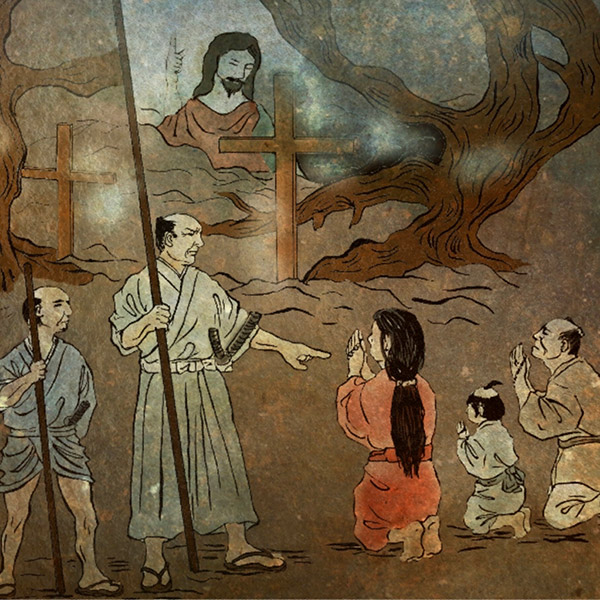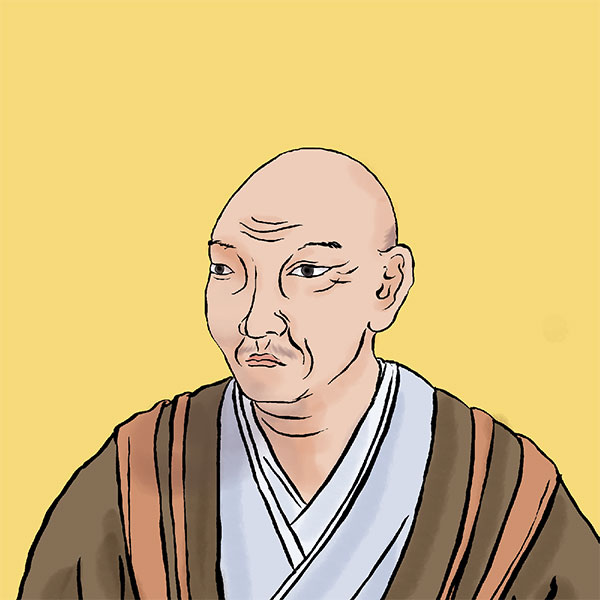Bungo collapse (1/2)Round-up of hidden Christians in Oita

Bungo collapse
- Article category
- case file
- Incident name
- Bungo collapse (1660-1682)
- place
- Oita Prefecture
- Related castles

Funai Castle
- people involved
After Christianity was banned during the Edo period, Hidden Christians believed in Christianity in order to hide from the shogunate. Such hidden Christians have been captured and suppressed through repeated raids by the Shogunate. One of these is the ``Bungozuru'' that occurred in Bungo Province (most of present-day Oita Prefecture) from 1660 to 1682. According to one theory, nearly 1,000 hidden Christians were captured during this incident, also known as Bungoroken or Manjiroken. Why did the shogunate ban Christianity and continue to hunt down hidden Christians? This time, we will take a closer look at the Bungo collapse, including its background.
Introduction of Christianity and Toyotomi Hideyoshi's ban on Christianity
Before talking about the Bungo Collapse, I would like to briefly explain how Christianity was introduced to Japan and how it became prohibited. It was Francis Xavier, a Catholic Jesuit missionary, who introduced Christianity to Japan. Xavier landed in Kagoshima in 1549 and began his missionary work. After that, Jesuit missionaries such as Luis Frois and Alessandro Valignano spread Christianity mainly in Kyushu and Kinai.
The Society of Jesus appealed to those in power at the time by combining Christian missionary work and trade with the South. In addition, Oda Nobunaga, the powerful man at the time, approved of Christian missionary work, and ``Christian feudal lords'' such as Otomo Sorin, Konishi Yukinaga, and Takayama Ukon appeared. As they actively carried out missionary work to the people of their territory, the number of Christians, or Christians, increased, and it is estimated that there were 200,000 Christians at its peak.
Toyotomi Hideyoshi, who succeeded Nobunaga, initially accepted Christianity, but Christians destroyed temples and shrines, Christian feudal lords forcibly converted their people, donated land to the Society of Jesus, and sent Japanese slaves overseas. Due to export issues and other reasons, the country moved toward banning Christianity. Hideyoshi issued the ``Bateren Expulsion Order'' on June 19, 1587, and regulated Christianity. At first, the restrictions were lenient, but due to the San Felipe Incident in October 1596, a ban on Christianity was issued in December of the same year. In December 1597, he took tough measures, executing a total of 26 Franciscan missionaries and Japanese Christians in Nagasaki.
The Edo Shogunate also excluded Christianity.
In the era of Tokugawa Ieyasu, the Edo shogunate initially tolerated Christianity tacitly, perhaps because it had the advantage of trade with South Korea. However, in the wake of the Okamoto Daihachi Incident, a fraud incident involving Christians that occurred from 1609 to 1612, Ieyasu issued a ban on Christianity and banned churches in areas under his direct control. Ordered the destruction of the city and the prohibition of proselytizing. Forces Christian daimyo to renounce Christianity. In 1613, the ban on Christianity was extended to the entire country and Christianity began to be excluded in earnest. It is said that around this time, the creation of the ``Shumon Kaicho'', which investigated and recorded the religions believed by the people, began.
I think Ieyasu's decision was partly due to his desire to suppress the Christians who were expanding their influence, but a change in trade destinations was also a contributing factor. Until now, the Catholic countries Portugal and Spain, which had been propagating Christianity in Japan, had sold to Japan a combination of missionary work and trade with the South, but around this time, countries such as the Protestant Netherlands, which were solely focused on trading had come to Japan. Later, the Edo shogunate decided to close the country, denying entry to Catholic countries, and monopolizing trade with China and the Netherlands in Nagasaki.
Afterwards, the second shogun, Hidetada Tokugawa, followed in the footsteps of Ieyasu, and in 1616 he issued the "Two Port Restriction Order," showing a stance of banning Christianity, which led to Christians becoming apostates. , I was shown two paths: I could go into hiding and continue to believe in Christianity. Hidden Christians who chose to go into hiding would continue to suffer severe oppression and persecution.
Shimabara Rebellion accelerates oppression of Christians
As the ban on Christianity progressed, dissatisfaction among the hidden Christians exploded, and a large-scale uprising broke out. This was the ``Shimabara Rebellion,'' which occurred from October 1637 to the end of February 1638, centered around Shimabara and Amakusa (Shimabara City, Nagasaki Prefecture, and Amakusa City, Kumamoto Prefecture). Due to this large-scale rebellion, the Shogunate further strengthened its sense of crisis against Christianity and strictly prohibited missionary work.
As a measure to eliminate Christianity, the shogunate spread a system throughout the country, including ``fumi-e,'' where people step on statues of Christ and Mary, and ``Gangs of Five,'' each consisting of five households, encouraging mutual monitoring and reporting. To go. Fumi-e was especially popular in Kyushu.
From 1635 onwards, the ``Terabei system'' was introduced, in which all non-Christians were required to become danka of some temple, and the scope of the system was gradually expanded. In addition to obliging Buddhist funerals, since Shintoism and Buddhism were mixed at that time, it was also obligatory to visit shrines as parishioners.
In 1640, after the Shimabara Rebellion, Masashige Inoue, an ometsuke, exposed Christians and appointed him as the person in charge of the ``Sōmon Kaiyaku'', which regularly investigated the religions that people believed in. I'll get a job. Sōmon Kaiyaku was officially established in 1657, and the shogunate further ordered feudal domains to implement Sōmon Kaiyaku and appoint dedicated officials in Kanbun 4 (1664). As a result, sect kaicho were created in various places.
Bungo, where Christianity was popular
Now let's get into the story of Bungo. Before the ban on Christianity, Christianity was widely practiced in Kyushu, and the same was true in Bungo. During the Sengoku period, Bungo was ruled by Sorin Otomo, known as the ``Christian daimyo''. Sorin, who had met Francisco Xavier, was baptized into Christianity in 1578. In 1582, he sent the Tensho Embassy to Europe along with other Kyushu Christian daimyo Sumitada Omura and Harunobu Arima.
There is a continuation of the article on the Bungo collapse.
- people involved

- WriterNaoko Kurimoto(Writer)I am a former travel industry magazine reporter. I have loved history, both Japanese and world history, since I was a child. I usually enjoy visiting temples and shrines, especially shrines, and often do ``pilgrimages to sacred places'' themed around historical figures. My favorite military commander is Ishida Mitsunari, my favorite castle is Kumamoto Castle, and my favorite castle ruins is Hagi Castle. My heart flutters when I see the ruins of battle castles and the stone walls of castle ruins.




